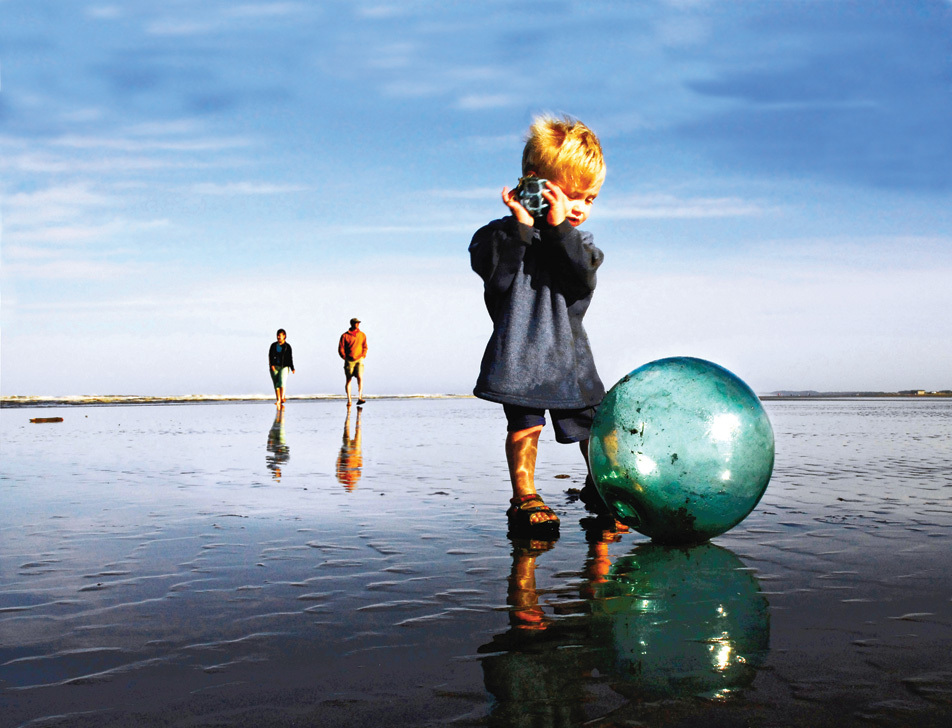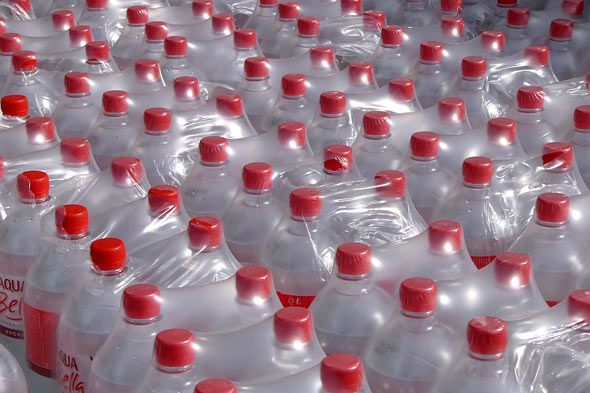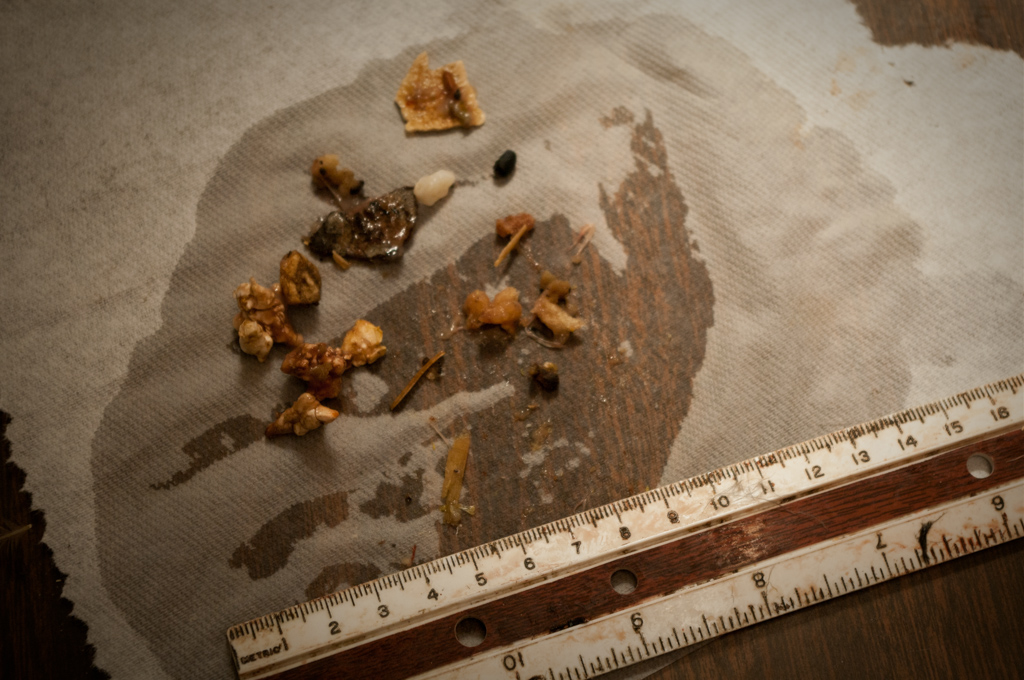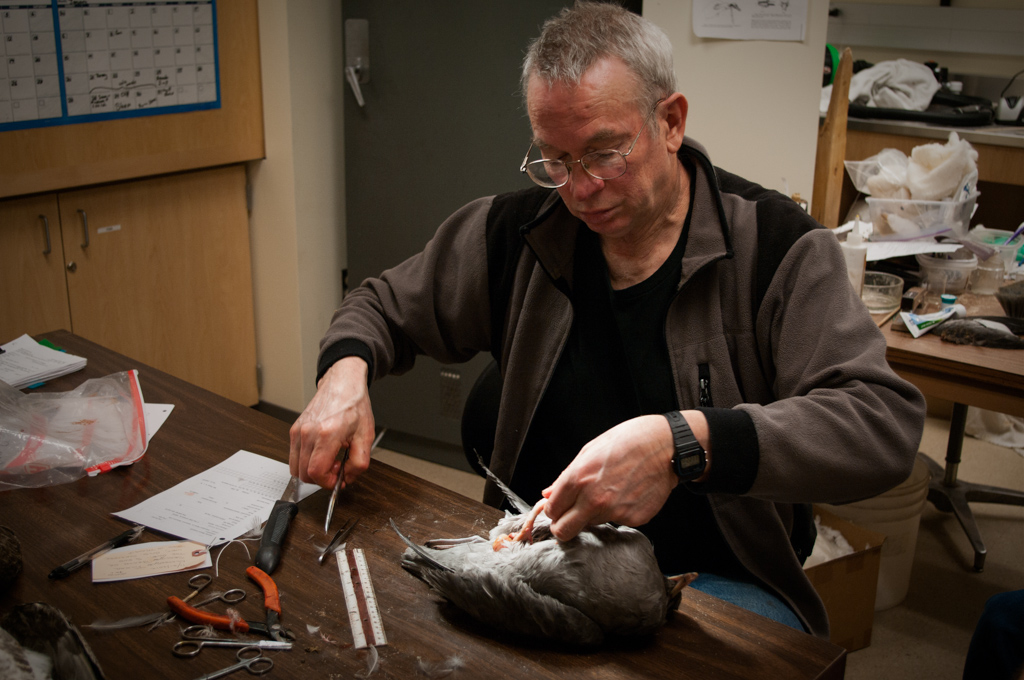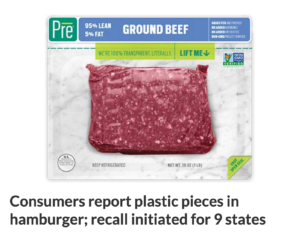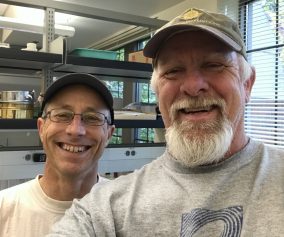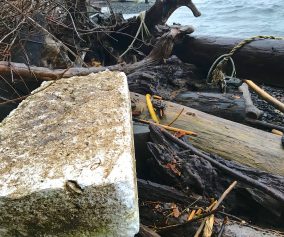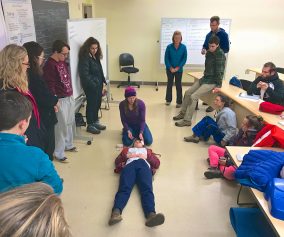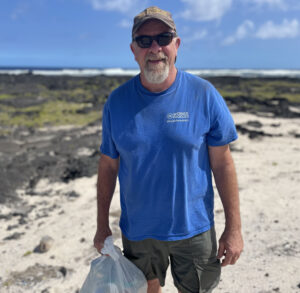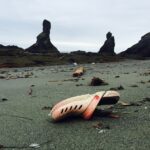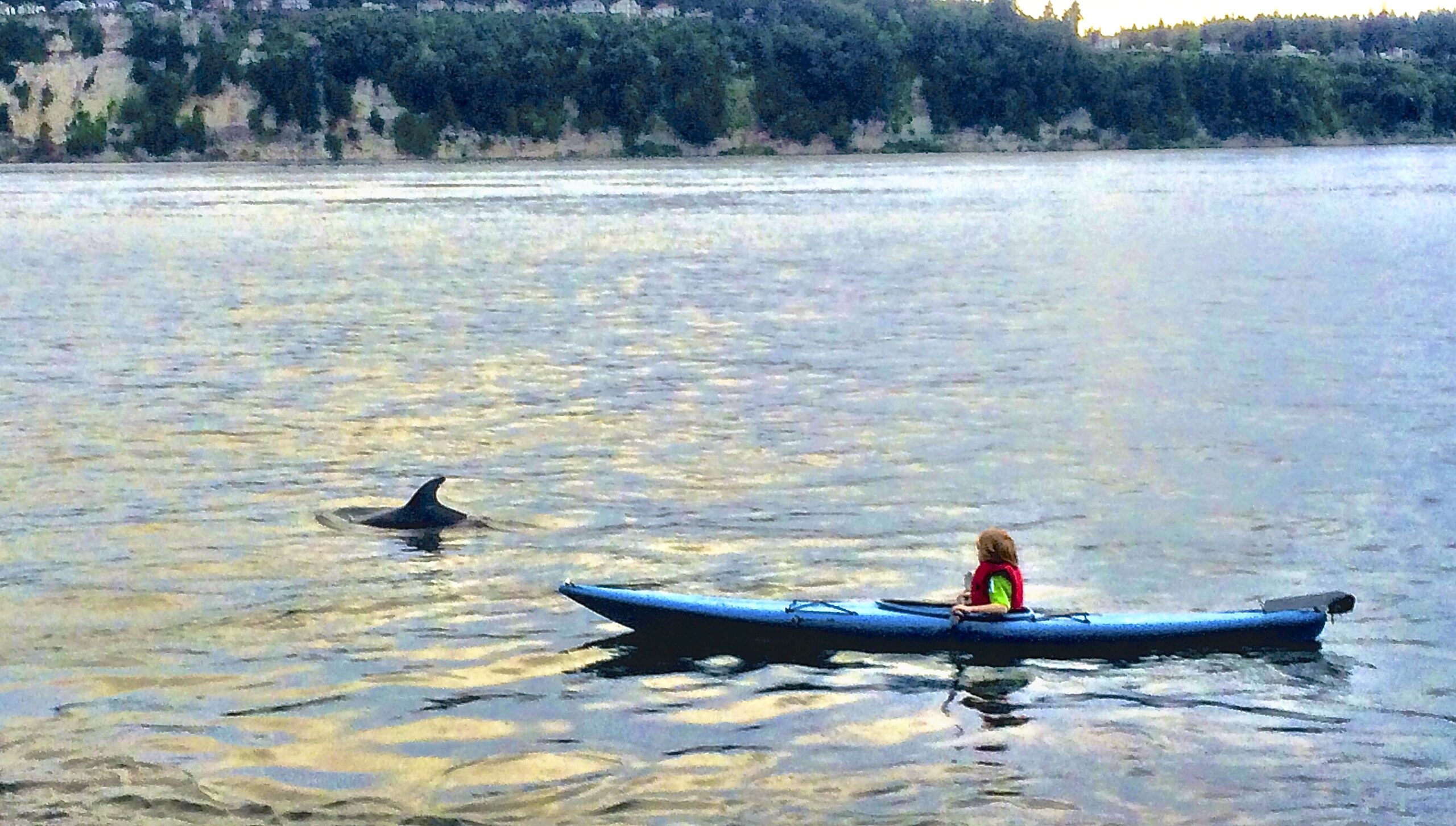The last necropsy I participated in (if you don’t count the Thanksgiving turkey), was the frog in 9th grade biology class. My clearest memories about that experience involve the overwhelming stink of formaldehyde and the whispers, giggles and awkward exhalations of a room full of 14 year-olds facing death for the first time. We were sheltered back then.
Yesterday, Steve and I had the opportunity to learn from Gary Shugard, of the Slater Museum at UPS, and do a few sample necropsies on gulls, cormorants and mergansers. Gary taught us where to make the first incision, how to determine sex of the bird and the levels of subcutaneous and intestinal fat, and finally, how to extract the stomachs and examine their contents. We practiced on birds that were unlikely to have plastic in their guts (we found a few pebbles and shell fragments), but Gary finished off the session by doing the procedure on a northern fulmar, one of the indicator species that have been showing up with larger amounts of ingested debris.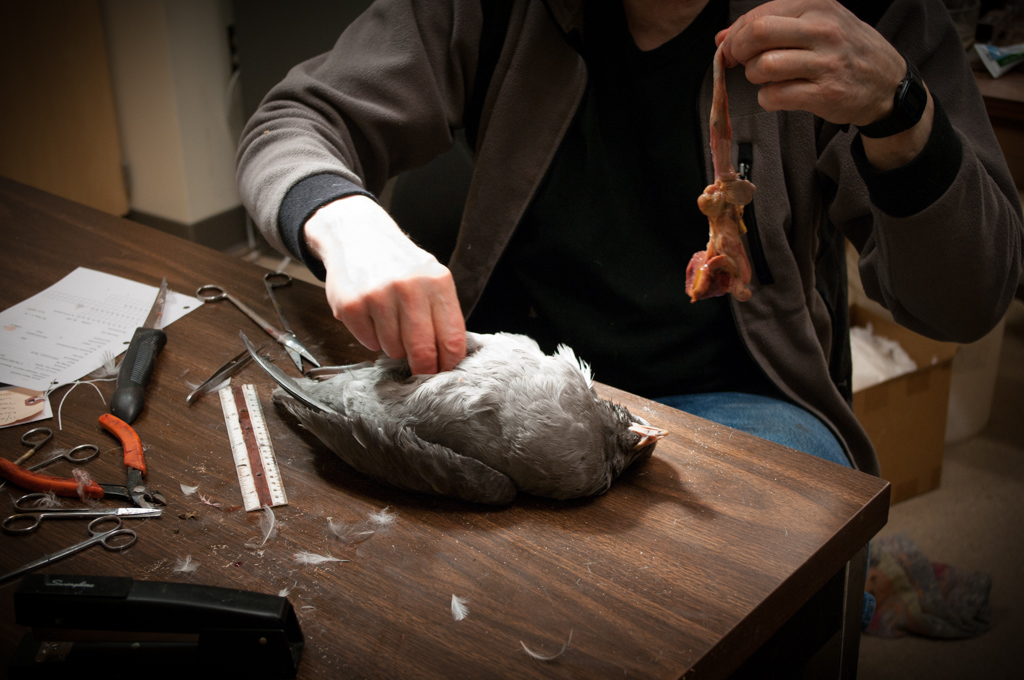
That’s where it really hit home. As he cut into the proventriculus and spread the tissue flat, chunks of plastic were obvious. Then, in the ventriculus (the small, muscular lower stomach), he showed how the entire pouch was filled with plastic fragments and foam nuggets. When I asked him if this was a large amount of plastic, based on the other fulmars that he’d seen, he said that it was, although not so much as to be exceptional. There was plenty to go around.
The experience was a glimpse into how we’ll spend our summer, or at least a part of it. I have more studying to do but it seems like something we can handle and I am hopeful that we get the chance to use our new skills. I can’t help but worry a little, however, at what we might find.
